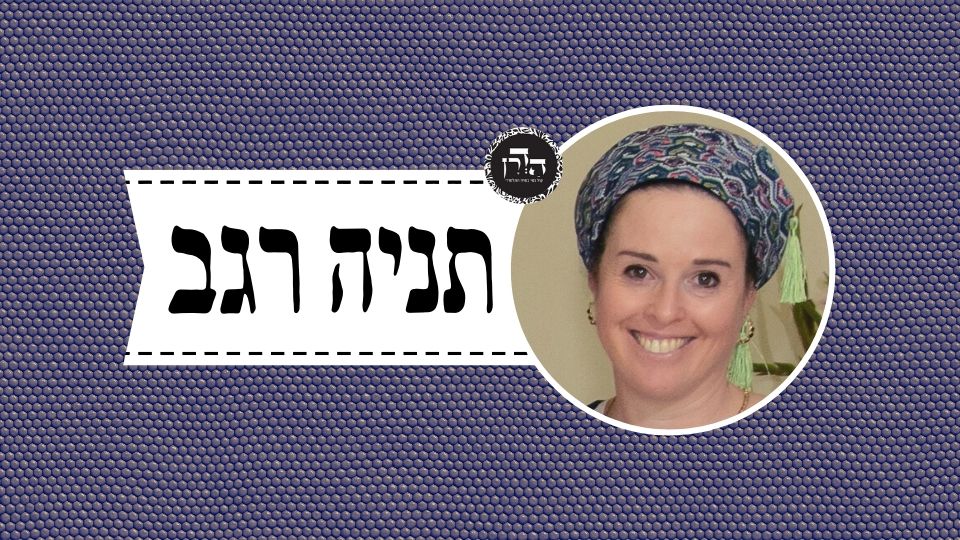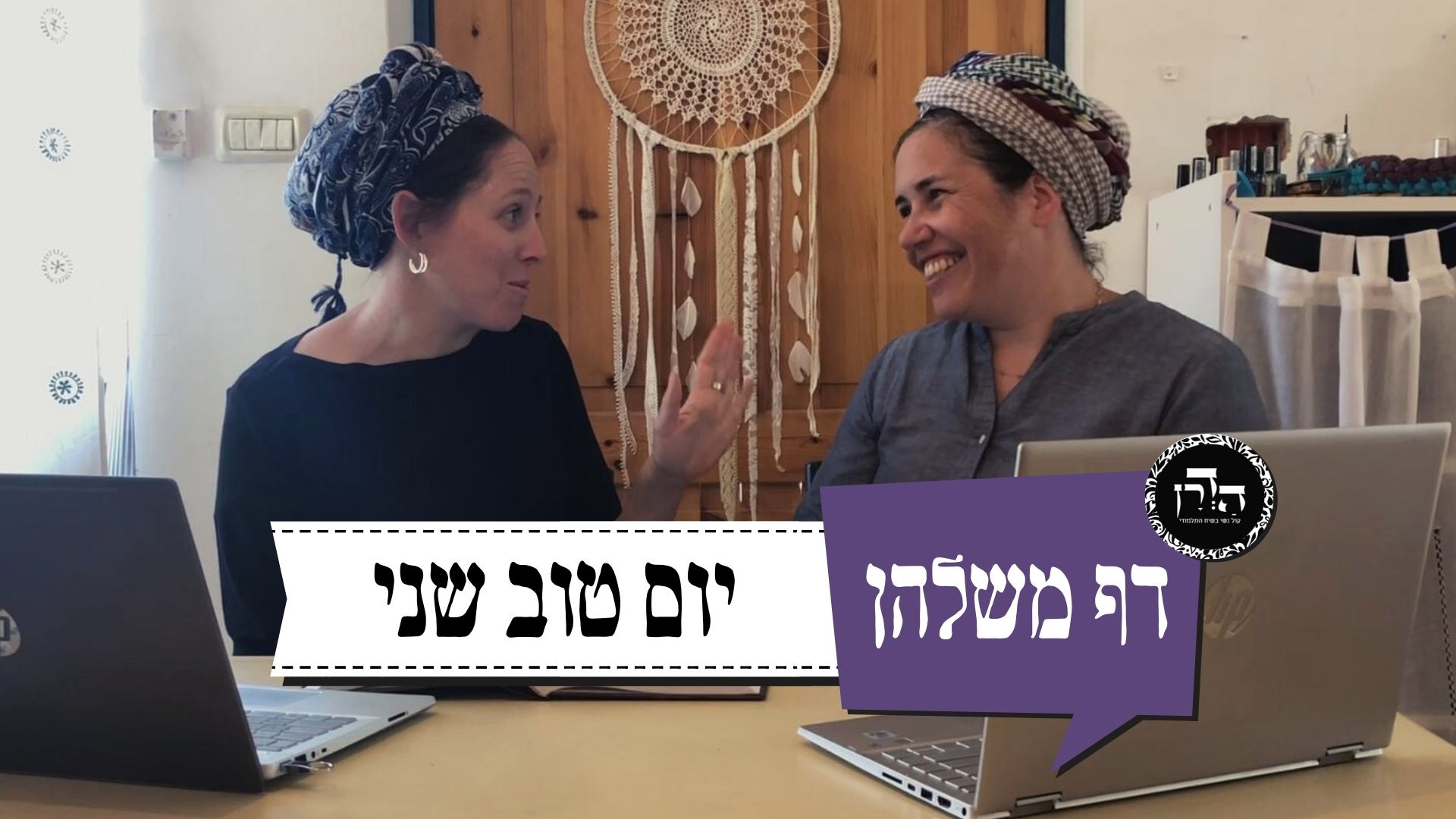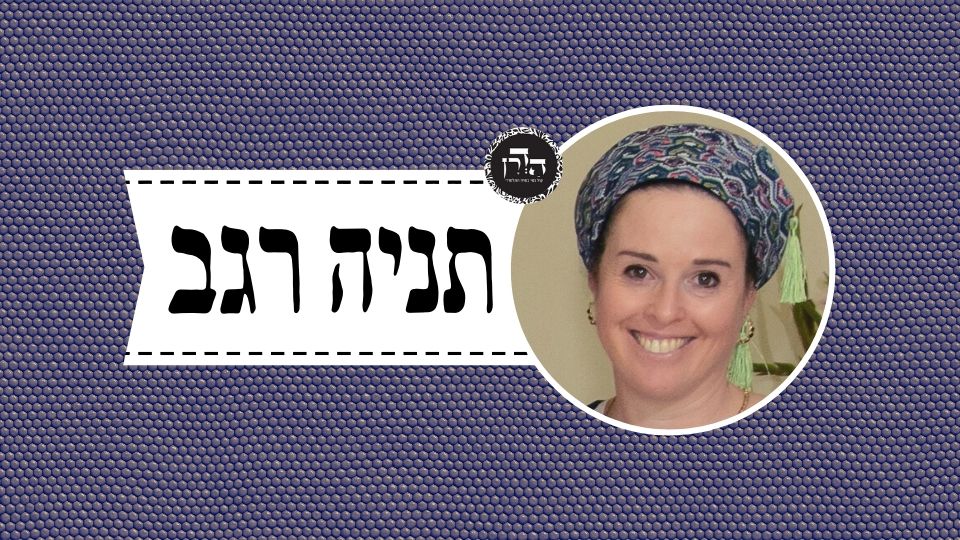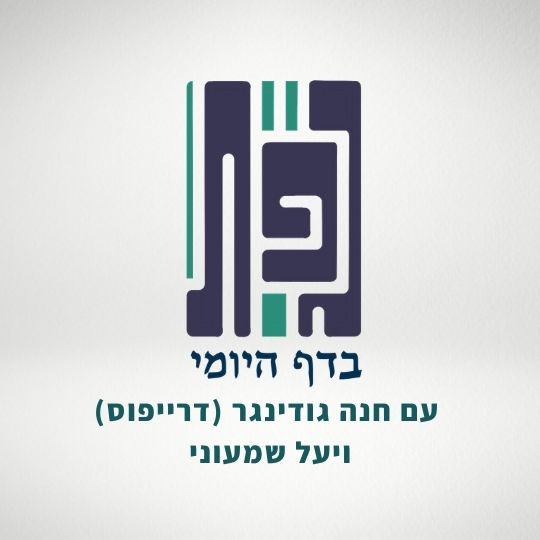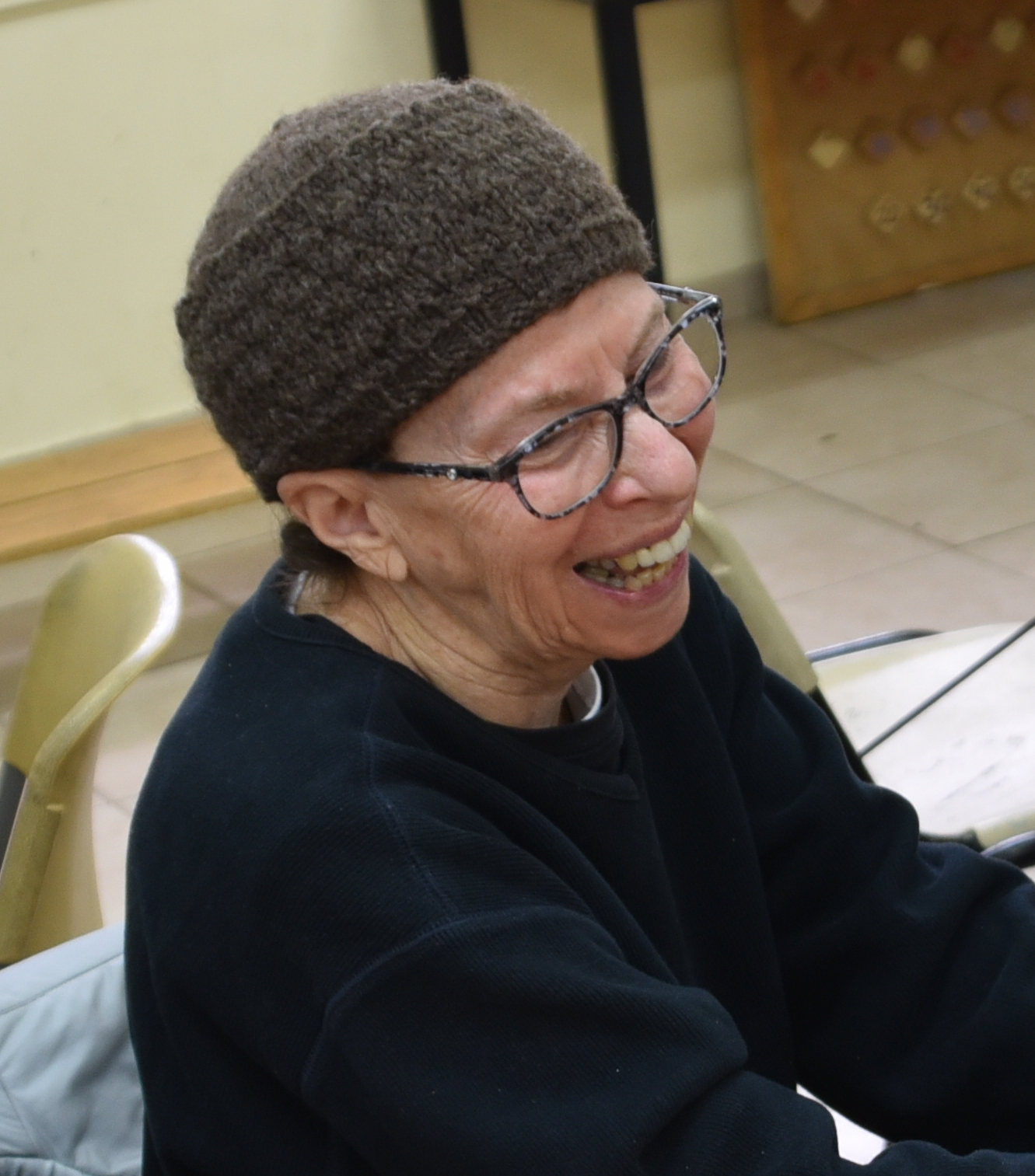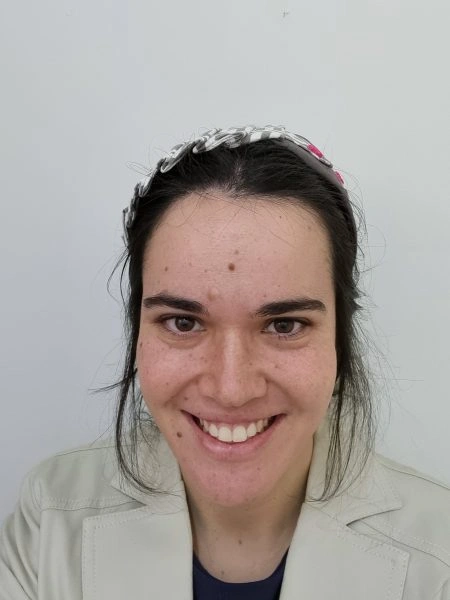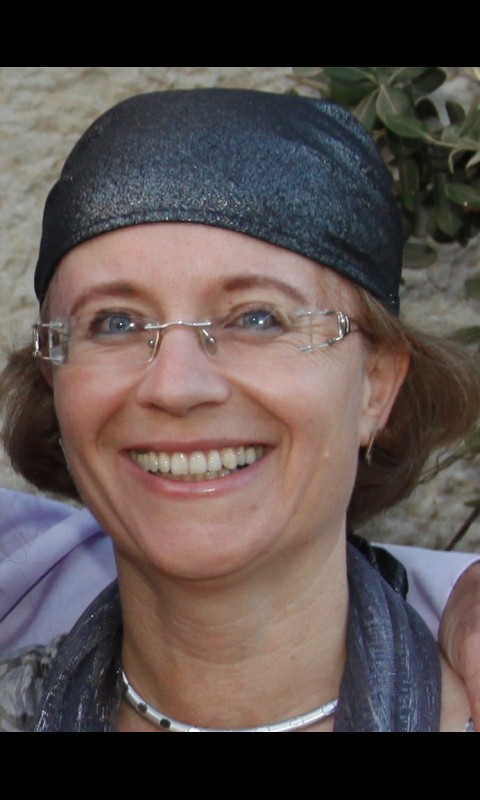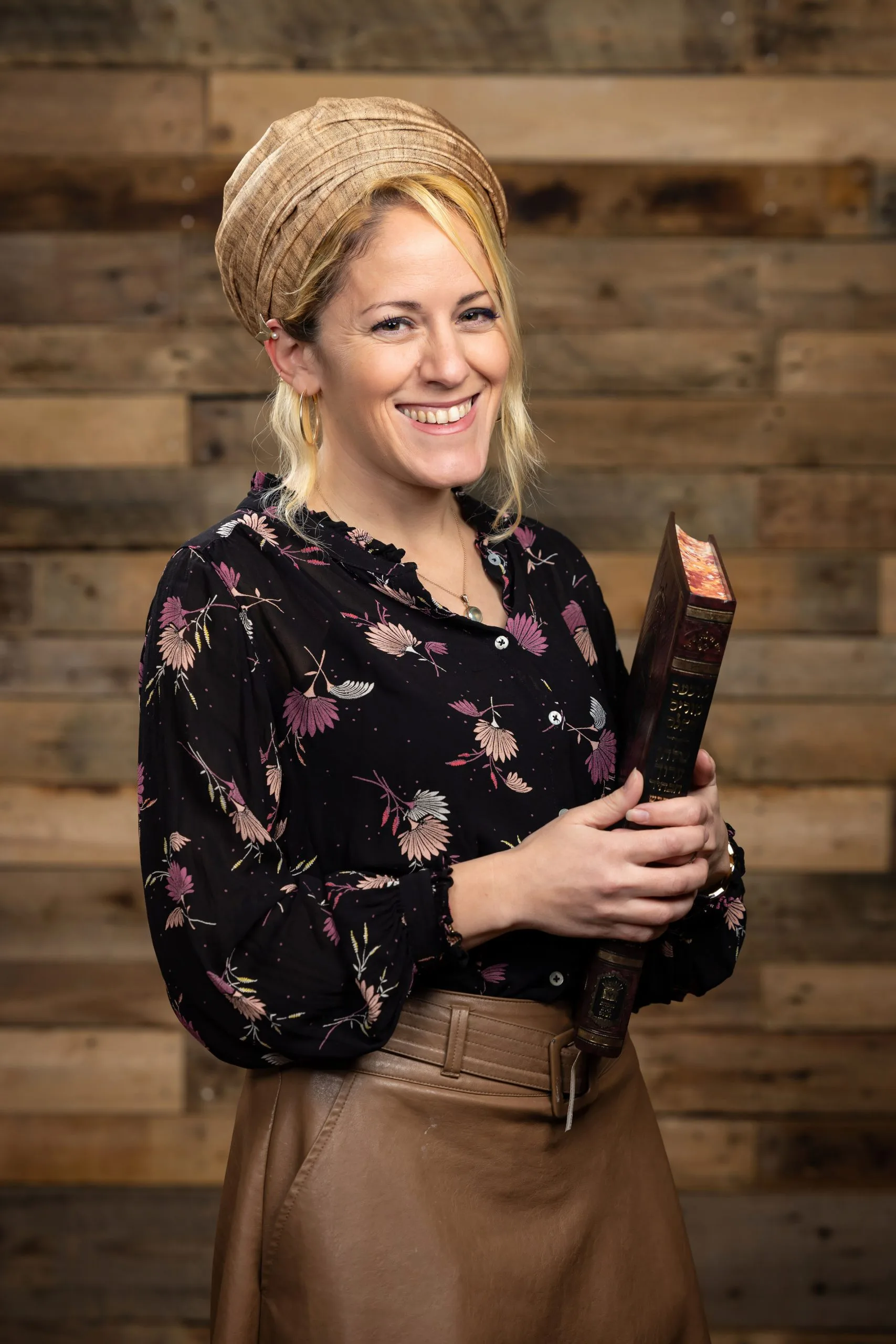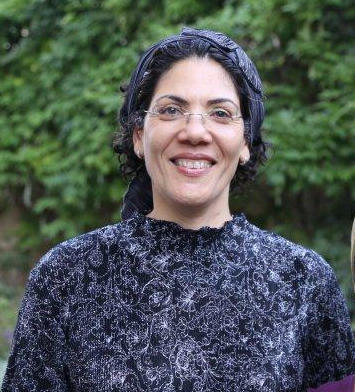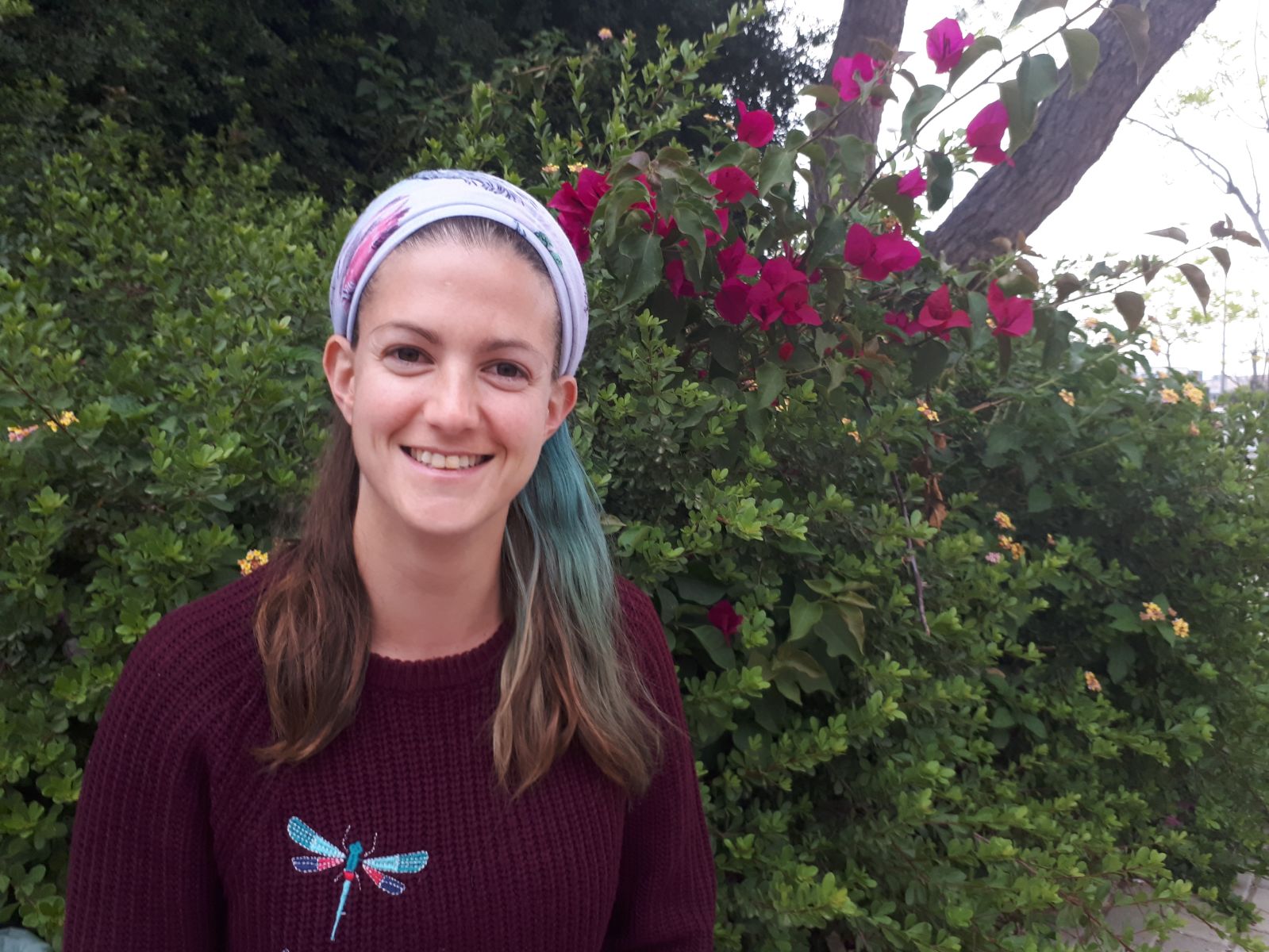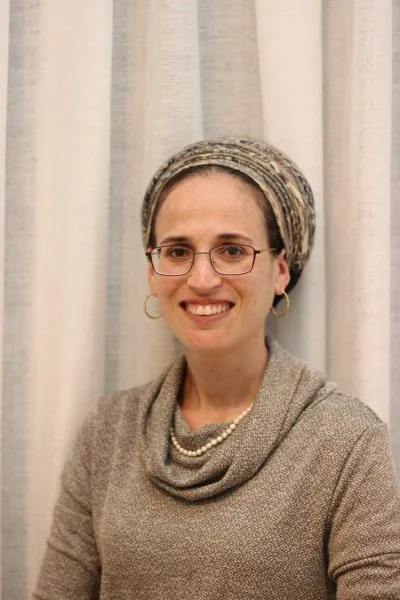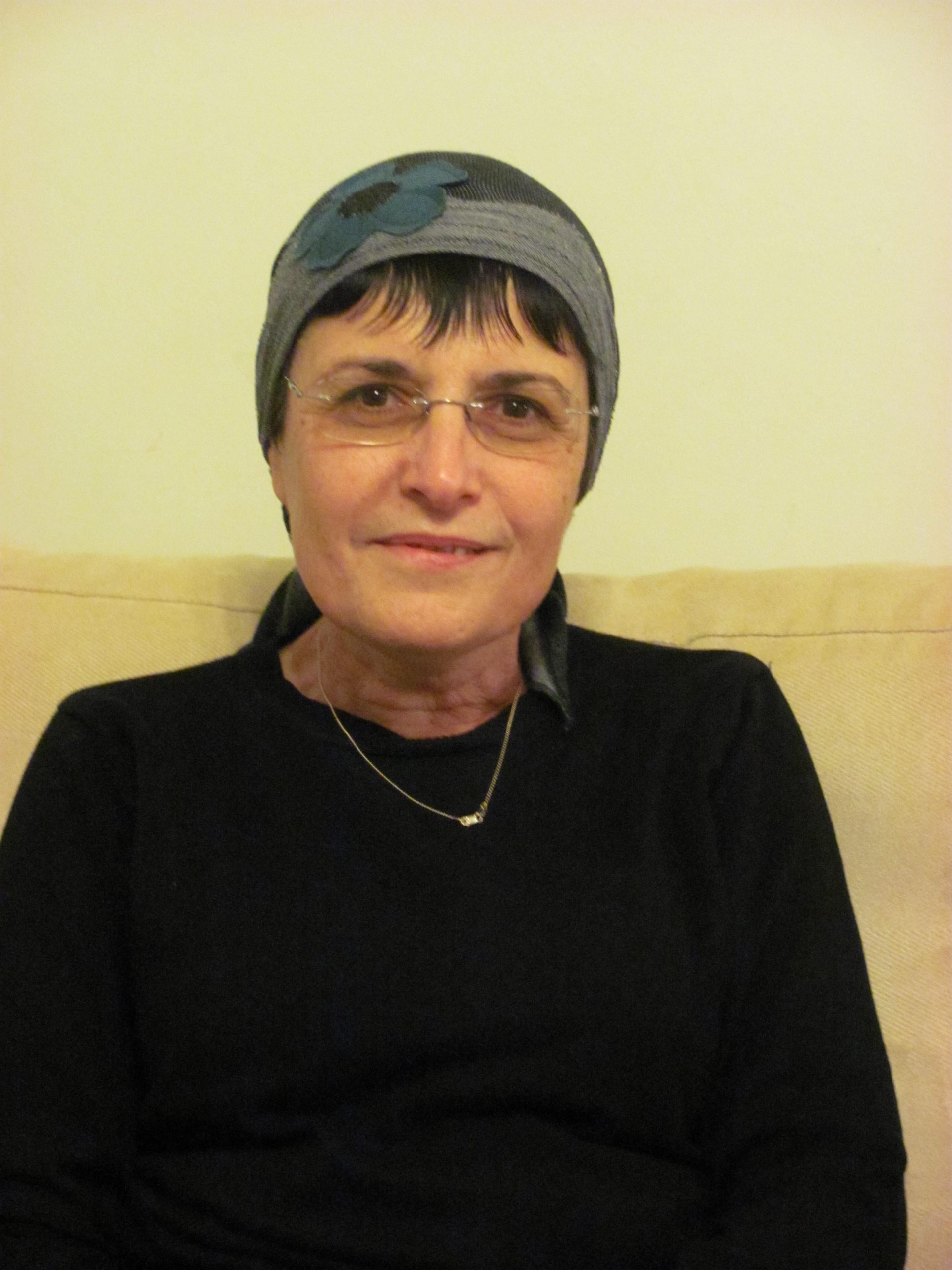סוכה לב
קָווּץ, סָדוּק, עָקוֹם דּוֹמֶה לְמַגָּל — פָּסוּל. חָרוּת — פָּסוּל. דּוֹמֶה לְחָרוּת — כָּשֵׁר. אָמַר רַב פָּפָּא: דַּעֲבִיד כְּהֶימְנֵק.
that is thorny, split, or curved to the extent that it is shaped like a sickle is unfit. If it became hard as wood it is unfit. If it merely appears like hard wood but is not yet completely hardened, it is fit. Apparently, a split lulav is unfit. Rav Pappa said: The split lulav in the baraita is so split that it is shaped like a fork [heimanak], with the two sides of the split completely separated, and it appears that the lulav has two spines.
עָקוֹם דּוֹמֶה לְמַגָּל, אָמַר רָבָא: לָא אֲמַרַן אֶלָּא לְפָנָיו, אֲבָל לְאַחֲרָיו — בִּרְיָיתֵיהּ הוּא.
The baraita continues: If it is curved to the extent that it is shaped like a sickle, it is unfit. Rava said: We said that it is unfit only when it is curved forward away from the spine; however, if it is curved backward, toward the spine, it is fit for use because that is its nature, and that is the way a lulav typically grows.
אָמַר רַב נַחְמָן: לִצְדָדִין — כִּלְפָנָיו דָּמֵי. וְאָמְרִי לַהּ: כִּלְאַחֲרָיו דָּמֵי.
Rav Naḥman said: The legal status of a lulav that is curved to either of the sides is like that of a lulav curved forward, and it is unfit. And some say: Its legal status is like that of a lulav curved backward, and it is fit.
וְאָמַר רָבָא: הַאי לוּלַבָּא דְּסָלֵיק בְּחַד הוּצָא — בַּעַל מוּם הוּא, וּפָסוּל.
And Rava said: This lulav that grew with one leaf, i.e., leaves on only one side of the spine, is blemished and unfit.
נִפְרְצוּ עָלָיו כּוּ׳. אָמַר רַב פָּפָּא: נִפְרְצוּ — דְּעָבֵיד כִּי חוּפְיָא. נִפְרְדוּ — דְּאִיפָּרוּד אִפָּרוֹדֵי.
§ The mishna continues: If the palm leaves were severed from the spine of the lulav, it is unfit; if its leaves were spread, it is fit. Rav Pappa said: Severed means that the leaves are completely detached from the spine, and one ties them to the lulav, so that the lulav is made like a broom. Spread means that the leaves remain attached but are merely separated from the spine in that they jut outward.
בָּעֵי רַב פָּפָּא: נֶחְלְקָה הַתְּיוֹמֶת, מַהוּ? תָּא שְׁמַע, דְּאָמַר (רַבִּי יוֹחָנָן) אָמַר רַבִּי יְהוֹשֻׁעַ בֶּן לֵוִי: נִיטְּלָה הַתְּיוֹמֶת — פָּסוּל. מַאי לָאו, הוּא הַדִּין נֶחְלְקָה? לָא, נִיטְּלָה שָׁאנֵי, דְּהָא חֲסַר לֵיהּ.
Rav Pappa raised a dilemma: What is the halakha if the central twin-leaf split? The Gemara cites proof to resolve the dilemma. Come and hear that which Rabbi Yoḥanan said that Rabbi Yehoshua ben Levi said: If the central twin-leaf was removed, the lulav is unfit. What, is it not that the same is true if the twin-leaf split? The Gemara answers: No, the case where it was removed is different, because the result is that it is lacking, and an incomplete lulav is certainly unfit. However, if the leaf remains in place, even though it is split, it does not necessarily render the lulav unfit.
אִיכָּא דְּאָמְרִי: אָמַר (רַבִּי יוֹחָנָן) אָמַר רַבִּי יְהוֹשֻׁעַ בֶּן לֵוִי: נֶחְלְקָה הַתְּיוֹמֶת, נַעֲשָׂה כְּמִי שֶׁנִּיטְּלָה הַתְּיוֹמֶת וּפְסוּל.
Some say that Rabbi Yoḥanan said that Rabbi Yehoshua ben Levi said: If the central twin-leaf split, it becomes as a lulav whose central twin-leaf was removed, and it is unfit. According to this version of the statement, the dilemma is resolved.
רַבִּי יְהוּדָה אוֹמֵר. תַּנְיָא, רַבִּי יְהוּדָה אוֹמֵר מִשּׁוּם רַבִּי טַרְפוֹן: ״כַּפּוֹת תְּמָרִים״ — כְּפוֹת, אִם הָיָה פָּרוּד יִכְפְּתֶנּוּ.
§ The mishna continues. Rabbi Yehuda says: If the leaves were spread, one should bind the lulav from the top. It was taught in a baraita that Rabbi Yehuda says in the name of Rabbi Tarfon that the verse states: “Branches [kappot] of a date palm.” The Sages interpret the term to mean bound [kafut], indicating that if the leaves of the lulav were spread, one should bind it.
אֲמַר לֵיהּ רָבִינָא לְרַב אָשֵׁי: מִמַּאי דְּהַאי ״כַּפּוֹת תְּמָרִים״ דְּלוּלַבָּא הוּא? אֵימָא חֲרוּתָא! בָּעֵינָא כְּפוֹת וְלֵיכָּא.
Ravina said to Rav Ashi: From where is it ascertained that this term, “branches of a date palm,” is referring to the branches of the lulav? Say it is referring to the hardened branch of the date palm. Rav Ashi answered: That cannot be, as we require the lulav to be bound, and there is no binding, since at that stage the hardened leaves point outward, and binding them is impossible.
וְאֵימָא אוּפְתָּא! ״כְּפוֹת״ — מִכְּלָל דְּאִיכָּא פָּרוּד, וְהַאי כָּפוּת וְעוֹמֵד לְעוֹלָם.
The Gemara asks: If the fundamental requirement of the mitzva is a lulav that appears as one unit, say that one takes the trunk of the date palm. The Gemara answers: The term bound, from which it is derived that the branch should appear as one unit, indicates that there is the possibility that it could be spread. However, this trunk is perpetually bound, as it can never become separated.
וְאֵימָא כּוּפְרָא? אָמַר אַבָּיֵי: ״דְּרָכֶיהָ דַרְכֵי נוֹעַם וְכׇל נְתִיבוֹתֶיהָ שָׁלוֹם״ כְּתִיב.
The Gemara asks: And say the verse is referring to the branch of the date palm [kufra] that has not yet hardened completely and could still be bound, albeit with difficulty. Abaye said that it is written in praise of the Torah: “Its way are ways of pleasantness and all its paths are peace” (Proverbs 3:17). At that stage of development, some of the leaves are thorns that potentially wound. The Torah would not command to use that type of branch in fulfilling the mitzva.
אֲמַר לֵיהּ רָבָא תּוֹסְפָאָה לְרָבִינָא: וְאֵימָא תַּרְתֵּי כַּפֵּי דְתַמְרֵי? ״כַּפַּת״ כְּתִיב. וְאֵימָא חֲדָא? לְהָהוּא — ״כַּף״ קָרֵי לֵיהּ.
Rava, the expert in Tosefta, said to Ravina: Since the verse states “branches of a date palm” in the plural, say that one is obligated to take two palm branches in fulfilling the mitzva of the four species. Ravina answered: Although the word is vocalized in the plural, based on tradition kappot is written without the letter vav, indicating that only one is required. The Gemara suggests: And say that one is required to take only one leaf? The Gemara answers: If that were the intention of the Torah, it would not have written kappot without a vav. That single leaf is called kaf. Kappot without the vav indicates both plural, i.e., multiple leaves, and singular, i.e., one branch.
צִינֵּי הַר הַבַּרְזֶל — כְּשֵׁרָה. אָמַר אַבָּיֵי: לֹא שָׁנוּ אֶלָּא שֶׁרֹאשׁוֹ שֶׁל זֶה מַגִּיעַ לְצַד עִיקָּרוֹ שֶׁל זֶה, אֲבָל אֵין רֹאשׁוֹ שֶׁל זֶה מַגִּיעַ לְצַד עִיקָּרוֹ שֶׁל זֶה — פָּסוּל.
§ The mishna continues: A lulav from the palms of the Iron Mountain is fit. It has few leaves on its spine, and those leaves are not crowded together like the leaves on a standard lulav. Abaye said: The Sages taught that this type of lulav is fit only in a case in which the top of this leaf reaches the base of that leaf above it on the spine. However, if there are so few leaves that the top of this leaf does not reach the base of that leaf, it is unfit.
תַּנְיָא נָמֵי הָכִי: צִינֵּי הַר הַבַּרְזֶל פְּסוּלָה. וְהָא אֲנַן תְּנַן כְּשֵׁרָה! אֶלָּא שְׁמַע מִינַּהּ כְּאַבָּיֵי: שְׁמַע מִינַּהּ.
That was taught in a baraita as well: A lulav from the palms of the Iron Mountain are unfit. The Gemara asks: But didn’t we learn in the mishna that it is fit? Rather, learn from it in accordance with the statement of Abaye, that there is a distinction based on the configuration of the leaves on the lulav. Indeed, learn from it.
וְאִיכָּא דְּרָמֵי לַיהּ מִירְמֵא: תְּנַן צִינֵּי הַר הַבַּרְזֶל — כָּשֵׁר, וְהָתַנְיָא: פְּסוּלָה! אָמַר אַבָּיֵי, לָא קַשְׁיָא: כָּאן — שֶׁרֹאשׁוֹ שֶׁל זֶה מַגִּיעַ לְצַד עִיקָּרוֹ שֶׁל זֶה, כָּאן — שֶׁאֵין רֹאשׁוֹ שֶׁל זֶה מַגִּיעַ לְצַד עִיקָּרוֹ שֶׁל זֶה.
And others raise it as a contradiction. We learned in the mishna: A lulav from the palms of the Iron Mountain is fit. But isn’t it taught in a baraita: It is unfit? Abaye said: This is not difficult: Here, in the mishna, where the lulav is fit, it is referring to a case where the top of this leaf reaches the base of that next leaf, whereas, there, in the baraita, where the lulav is unfit, it is referring to a case where the top of this leaf does not reach the base of that next leaf.
אָמַר רַבִּי מָרִיּוֹן אָמַר רַבִּי יְהוֹשֻׁעַ בֶּן לֵוִי, וְאָמְרִי לַהּ תָּנֵי רַבָּה בַּר מָרִי מִשּׁוּם רַבָּן יוֹחָנָן בֶּן זַכַּאי: שְׁתֵּי תְמָרוֹת יֵשׁ בְּגֵיא בֶּן הִנֹּם, וְעוֹלֶה עָשָׁן מִבֵּינֵיהֶם. וְזֶהוּ שֶׁשָּׁנִינוּ: צִינֵּי הַר הַבַּרְזֶל כְּשֵׁרוֹת, וְזוֹ הִיא פִּתְחָהּ שֶׁל גֵּיהִנָּם.
The Gemara describes the location of these lulavim. Rabbi Maryon said that Rabbi Yehoshua ben Levi said, and some say that Rabba bar Mari taught this baraita in the name of Rabban Yoḥanan ben Zakkai: There are two date palms in the valley of ben Hinnom, and smoke arises from between them. And this is the place about which we learned in the mishna: A lulav from the palms of the Iron Mountain is fit. And that site is the entrance of Gehenna.
לוּלָב שֶׁיֵּשׁ בּוֹ שְׁלֹשָׁה טְפָחִים. אָמַר רַב יְהוּדָה אָמַר שְׁמוּאֵל: שִׁיעוּר הֲדַס וַעֲרָבָה — שְׁלֹשָׁה, וְלוּלָב — אַרְבָּעָה, כְּדֵי שֶׁיְּהֵא לוּלָב יוֹצֵא מִן הַהֲדַס טֶפַח.
The mishna continues: A lulav that has three handbreadths in length, sufficient to enable one to wave with it, is fit for use in fulfilling the mitzva. Rav Yehuda said that Shmuel said: The minimum measure of a myrtle branch and a willow branch is three handbreadths. And the minimum measure of a lulav is four handbreadths. The difference between the measures is so that the lulav will extend at least one handbreadth from the myrtle branch.
וְרַבִּי פַּרְנָךְ אָמַר רַבִּי יוֹחָנָן: שִׁדְרוֹ שֶׁל לוּלָב צָרִיךְ שֶׁיֵּצֵא מִן הַהֲדַס טֶפַח.
And Rabbi Parnakh said that Rabbi Yoḥanan said: The spine of the lulav, and not merely its leaves, must be at least four handbreadths long, so that it will extend from the myrtle branch at least one handbreadth.
תְּנַן: לוּלָב שֶׁיֵּשׁ בּוֹ שְׁלֹשָׁה טְפָחִים כְּדֵי לְנַעְנֵעַ בּוֹ כָּשֵׁר. אֵימָא: וּכְדֵי לְנַעְנֵעַ בּוֹ, כָּשֵׁר. מָר כִּדְאִית לֵיהּ, וּמַר כִּדְאִית לֵיהּ.
The Gemara asks: Didn’t we learn in the mishna: A lulav that has three handbreadths in length, sufficient to enable one to wave with it, is fit for use in fulfilling the mitzva? That indicates that a lulav three handbreadths long is fit. The Gemara answers: Emend the language of the mishna and say: A lulav that has three handbreadths and an additional handbreadth that is sufficient to enable one to wave with it is fit. This emendation is understood by each amora according to his opinion. It is understood by this Sage, Shmuel, as per his opinion that only one additional handbreadth is required including the leaves; and it is understood by this Sage, Rabbi Yoḥanan, as per his opinion that the additional handbreadth must be in the length of the spine of the lulav, and the leaves are not taken into consideration.
תָּא שְׁמַע: שִׁיעוּר הֲדַס וַעֲרָבָה — שְׁלֹשָׁה, וְלוּלָב — אַרְבָּעָה. מַאי לָאו בַּהֲדֵי עָלִין! לָא, לְבַד מֵעָלִין.
The Gemara cites proof from a baraita. Come and hear: The minimum measure of a myrtle branch and of a willow branch is three handbreadths, and that of a lulav is four handbreadths. What, is it not that this measure is calculated with the leaves, in accordance with the opinion of Shmuel? The Gemara rejects this proof: No, it can be understood that the measure is calculated without the leaves.
גּוּפָא: שִׁיעוּר הֲדַס וַעֲרָבָה — שְׁלֹשָׁה, וְלוּלָב — אַרְבָּעָה. רַבִּי טַרְפוֹן אוֹמֵר: בְּאַמָּה בַּת חֲמִשָּׁה טְפָחִים.
Apropos the baraita cited above, the Gemara discusses the matter itself. The minimum measure of a myrtle branch and of a willow branch is three handbreadths, and that of a lulav is four handbreadths. Rabbi Tarfon says: With a cubit of five handbreadths. The preliminary understanding of Rabbi Tarfon’s opinion is that the minimum measure of a myrtle branch is five handbreadths, not three.
אָמַר רָבָא: שְׁרָא לֵיהּ מָרֵיהּ לְרַבִּי טַרְפוֹן. הַשְׁתָּא עָבוֹת שְׁלֹשָׁה לָא מַשְׁכְּחִינַן, בַּת חֲמִשָּׁה מִבַּעְיָא!
Rava said: May his Master, the Holy One, Blessed be He, forgive Rabbi Tarfon for this extreme stringency. Now, we do not find even a dense-leaved myrtle branch three handbreadths long; is it necessary to say that finding one five handbreadths long is nearly impossible?
כִּי אֲתָא רַב דִּימִי, אָמַר: אַמָּה בַּת שִׁשָּׁה טְפָחִים עֲשֵׂה אוֹתָהּ בַּת חֲמִשָּׁה, צֵא מֵהֶן שְׁלֹשָׁה לַהֲדַס, וְהַשְּׁאָר לַלּוּלָב. כַּמָּה הָווּ לְהוּ — תְּלָתָא וּתְלָתָא חוּמְשֵׁי.
When Rav Dimi came from Eretz Yisrael to Babylonia, he said that this is the correct understanding of the statement of Rabbi Tarfon: Take a cubit of six handbreadths, and render it a cubit of five handbreadths. Rabbi Tarfon is saying that for the purpose of measuring the myrtle branch, willow branch, and lulav, the standard six-handbreadth cubit is divided into five handbreadths, each slightly larger than the standard handbreadth. Take three of these large handbreadths for the myrtle branch, and three of these handbreadths plus the extra handbreadth for the lulav. The Gemara calculates: How many standard handbreadths are there in the minimum measure of a myrtle branch or willow branch? There are three and three-fifths standard handbreadths.
קַשְׁיָא דִּשְׁמוּאֵל אַדִּשְׁמוּאֵל: הָכָא אָמַר רַב יְהוּדָה אָמַר שְׁמוּאֵל: שִׁיעוּר הֲדַס וַעֲרָבָה — שְׁלֹשָׁה, וְהָתָם אָמַר רַב הוּנָא אָמַר שְׁמוּאֵל: הֲלָכָה כְּרַבִּי טַרְפוֹן! לָא דַּק. אֵימַר דְּאָמְרִינַן לָא דַּק לְחוּמְרָא, לְקוּלָּא מִי אָמְרִינַן לָא דַּק?!
However, on that basis, there is a difficulty, as one statement of Shmuel contradicts another statement of Shmuel. Here, Rabbi Yehuda said that Shmuel said: The minimum measure of the myrtle branch and of the willow branch is three handbreadths, and there, Rav Huna said that Shmuel said: The halakha is in accordance with the opinion of Rabbi Tarfon, who requires a larger handbreadth. There is a discrepancy of three-fifths of a handbreadth between the measures. The Gemara answers: When Shmuel said that the measure is three handbreadths, he was not precise and merely approximated the measure. The Gemara asks: Say that we say: He was not precise when the approximation leads to stringency, but when it leads to leniency, do we say: He was not precise? That would result in using an unfit myrtle branch in performing a mitzva.
כִּי אֲתָא רָבִין, אָמַר: אַמָּה בַּת חֲמִשָּׁה טְפָחִים עֲשֵׂה אוֹתָהּ שִׁשָּׁה. צֵא מֵהֶן שְׁלֹשָׁה לַהֲדַס, וְהַשְּׁאָר לַלּוּלָב. כַּמָּה הָוֵי לְהוּ — תְּרֵי וּפַלְגָא.
When Rabin came from Eretz Yisrael to Babylonia, he said that this is the correct understanding of the statement of Rabbi Tarfon: Take a cubit of five handbreadths, and render it a cubit of six handbreadths. Rabbi Tarfon said that for the purpose of measuring the myrtle branch, willow branch, and lulav, a five-handbreadth cubit is divided into six handbreadths, each slightly smaller than the standard handbreadth. Take three of these smaller handbreadths for the myrtle branch, and three of these handbreadths plus the extra handbreadth for the lulav. The Gemara calculates: How many standard handbreadths are there in the minimum measure of a myrtle branch or willow branch? There are two and a half standard handbreadths.
סוֹף סוֹף קַשְׁיָא דִּשְׁמוּאֵל אַדִּשְׁמוּאֵל! לָא דַּק, וְהַיְינוּ לְחוּמְרָא לָא דַּק. דְּאָמַר רַב הוּנָא אָמַר שְׁמוּאֵל: הֲלָכָה כְּרַבִּי טַרְפוֹן.
The Gemara asks: Ultimately, there remains a difficulty, as one statement of Shmuel contradicts another statement of Shmuel. In one statement he said the minimum measure of a myrtle branch is two and a half handbreadths, and in another he said that the measure is three handbreadths. The Gemara answers: When Shmuel said that the measure is three handbreadths, he was not precise and merely approximated the measure. And this is a case of: He was not precise, where the approximation leads to a stringency, as Rav Huna said that Shmuel said: The halakha is in accordance with the opinion of Rabbi Tarfon. Shmuel holds that the actual measure required is two and a half handbreadths, and he rounded it off to three, which is a more stringent measure.
מַתְנִי׳ הֲדַס הַגָּזוּל וְהַיָּבֵשׁ — פָּסוּל. שֶׁל אֲשֵׁרָה וְשֶׁל עִיר הַנִּדַּחַת — פָּסוּל. נִקְטַם רֹאשׁוֹ, נִפְרְצוּ עָלָיו, אוֹ שֶׁהָיוּ עֲנָבָיו מְרוּבּוֹת מֵעָלָיו — פָּסוּל. וְאִם מִיעֲטָן — כָּשֵׁר, וְאֵין מְמַעֲטִין בְּיוֹם טוֹב.
MISHNA: A myrtle branch that was stolen or that is completely dry is unfit. A myrtle branch of a tree worshipped as idolatry [asheira] or a myrtle branch from a city whose residents were incited to idolatry is unfit. If the top of the myrtle branch was severed, if the leaves were severed completely, or if its berries were more numerous than its leaves, it is unfit. If one diminished their number by plucking berries so that they no longer outnumbered the leaves, the myrtle branch is fit. But one may not diminish the number on the Festival itself.
גְּמָ׳ תָּנוּ רַבָּנַן: ״עֲנַף עֵץ עָבוֹת״ — שֶׁעֲנָפָיו חוֹפִין אֶת עֵצוֹ. וְאֵי זֶה הוּא? הֱוֵי אוֹמֵר זֶה הֲדַס. וְאֵימָא זֵיתָא! בָּעֵינַן ״עָבוֹת״, וְלֵיכָּא.
GEMARA: The Sages taught: It is written: “Boughs of a dense-leaved tree” (Leviticus 23:40); this is referring to a tree whose leaves obscure its tree. And which tree is that? You must say it is the myrtle tree. The Gemara suggests: And say it is the olive tree, whose leaves obscure the tree. The Gemara answers: We require a “dense-leaved” tree, whose leaves are in a chain-like configuration, and that is not the case with an olive tree.
וְאֵימָא דּוּלְבָּא! בָּעֵינַן עֲנָפָיו חוֹפִין אֶת עֵצוֹ, וְלֵיכָּא.
The Gemara suggests: And say it is the Oriental plane tree, whose leaves are in a braid-like configuration. The Gemara answers: We require a tree whose leaves obscure its tree, and that is not the case with an Oriental plane tree.
וְאֵימָא הִירְדּוּף! אָמַר אַבָּיֵי: ״דְּרָכֶיהָ דַרְכֵי נוֹעַם״, וְלֵיכָּא. רָבָא אָמַר, מֵהָכָא: ״הָאֱמֶת וְהַשָּׁלוֹם אֱהָבוּ״.
The Gemara suggests: And say the verse is referring to oleander, which has both characteristics. Abaye said: It is written with regard to the Torah: “Its ways are ways of pleasantness” (Proverbs 3:17), and that is not the case with the oleander tree, because it is a poisonous plant and its sharp, thorn-like leaves pierce the hand of one holding it. Rava said: The unfitness of the oleander is derived from here: “Love truth and peace” (Zechariah 8:19), and poisonous plants that pierce are antithetical to peace.
תָּנוּ רַבָּנַן: קָלוּעַ כְּמִין קְלִיעָה וְדוֹמֶה לְשַׁלְשֶׁלֶת, זֶהוּ הֲדַס. רַבִּי אֱלִיעֶזֶר בֶּן יַעֲקֹב אוֹמֵר: ״עֲנַף עֵץ עָבוֹת״ — עֵץ שֶׁטַּעַם עֵצוֹ וּפִרְיוֹ שָׁוֶה, הֱוֵי אוֹמֵר זֶה הֲדַס.
The Sages taught: Plaited like a braid and chain-like; that is characteristic of the myrtle branch used in the fulfillment of the mitzva. Rabbi Eliezer ben Ya’akov says another characteristic. It is written: “Boughs of a dense-leaved tree,” indicating a tree that the taste of its branches and the taste of its fruit are alike. You must say this is the myrtle branch.
תָּנָא: עֵץ עָבוֹת — כָּשֵׁר, וְשֶׁאֵינוֹ עָבוֹת — פָּסוּל.
A Sage taught in the Tosefta: A dense-leaved branch is fit, and one that is not dense-leaved is unfit, even though it is a myrtle branch.
הֵיכִי דָּמֵי עָבוֹת? אָמַר רַב יְהוּדָה: וְהוּא דְּקָיְימִי תְּלָתָא תְּלָתָא טַרְפֵי בְּקִינָּא. רַב כָּהֲנָא אָמַר: אֲפִילּוּ תְּרֵי וְחַד. רַב אַחָא בְּרֵיהּ דְּרָבָא מְהַדַּר אַתְּרֵי וְחַד, הוֹאִיל וּנְפַיק מִפּוּמֵּיהּ דְּרַב כָּהֲנָא. אֲמַר לֵיהּ מָר בַּר אַמֵּימָר לְרַב אָשֵׁי: אַבָּא לְהָהוּא — הֲדַס שׁוֹטֶה קָרֵי לֵיהּ.
The Gemara asks: What are the circumstances of “dense-leaved tree”? Rav Yehuda said: And it is a configuration where three leaves emerge from each base. Rav Kahana said: Even two leaves emerging from one base and one leaf that covers the other two emerging from a lower base is called thick. Rav Aḥa, son of Rava, would purposely seek a myrtle branch configured with two leaves emerging from one base and one emerging from a lower base, since this statement emerged from the mouth of Rav Kahana. Mar bar Ameimar said to Rav Ashi: My father called a myrtle branch with that configuration a wild myrtle branch.
תָּנוּ רַבָּנַן: נָשְׁרוּ רוֹב עָלָיו וְנִשְׁתַּיְּירוּ בּוֹ מִיעוּט — כָּשֵׁר, וּבִלְבַד שֶׁתְּהֵא עֲבוֹתוֹ קַיֶּימֶת.
The Sages taught: If most of its leaves fell and only a minority of the leaves remained, the myrtle branch is fit, provided that its dense-leaved nature remains intact.
הָא גוּפָא קַשְׁיָא: אָמְרַתְּ נָשְׁרוּ רוֹב עָלָיו כָּשֵׁר, וַהֲדַר תָּנֵי וּבִלְבַד שֶׁתְּהֵא עֲבוֹתוֹ קַיֶּימֶת. כֵּיוָן דְּנָתְרִי לְהוּ תְּרֵי, עָבוֹת הֵיכִי מַשְׁכַּחַתְּ לַהּ?
The Gemara wonders: This matter itself is difficult, as there is an internal contradiction in this baraita. On the one hand, you said: If most of its leaves fell it is fit, and then the baraita taught: Provided that its dense-leaved nature remains intact. Once two of every three leaves fell, how can you find a branch whose dense-leaved nature is intact?
אָמַר אַבָּיֵי: מַשְׁכַּחַתְּ לַהּ
Abaye said: You can find it


